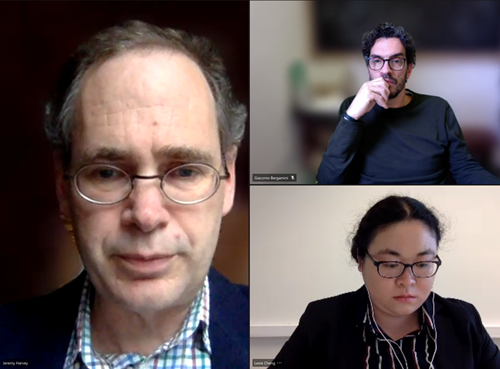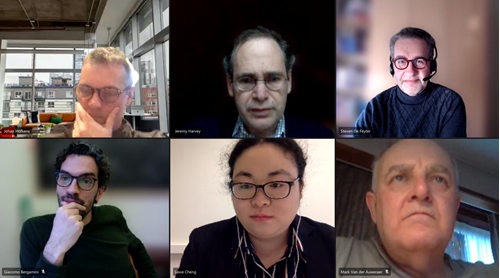Roeffaers Lab
Nanoscopy and catalysis
PhD Defence Lexie Cheng
The use of perovskites in photocatalysis (Dissertation Lexie Cheng 2021)

The generation of clean, renewable energy sources has been a hot research topic for the past decades. Photocatalysis is a plausible way to store intermittently available solar energy in chemical bonds. So far, many metal oxides, metal sulfides, metal complexes, and their composites have been investigated for their efficiency as visible-light photocatalysts. It is still of great interest and practical importance to develop a cost-effective visible-light-driven catalyst for artificial photosynthesis.
Recently, metal halide perovskites (MHPs) have been actively investigated to exploit their excellent optical properties, such as high visible-light absorption coefficients, long-range balanced electron-hole transport, etc., in combination with the potential of cheap and easy fabrication processes. However, the instability of MHPs in a polar environment limits the potential for their application as photocatalysts. To overcome this instability issue, reactions are usually performed in non-polar or low polarity solvents or in strongly concentrated metal halide solutions, which reverses the decomposition. As a prominent representative, cesium lead halides (CsPbX3, X = Cl, Br, I) have been seen as potential candidates for photocatalysis. Also, composite materials construction strategies have been actively utilized to optimize the activity and stability of MHPs in polar solvents. So far, CsPbBr3-based composites have been generated through the post-synthetic combination of preformed CsPbBr3 with other stabilizing materials. However, the in situ synthesis of composite materials offers enhanced surface contact with potentially improved activity and stability.
Therefore, the in situ construction of CsPbBr3-based composites, comprising a type-II
heterojunction, has been mainly investigated here.
Firstly, CsPbBr3 was combined with a porous metal-organic framework (MOF) through a simple in situ colloidal method. MIL-100 (Fe), a powerful visible-light-driven photocatalyst itself, was chosen to extend the composites’ specific surface area and visible light response. The enhanced separation of charge carriers in the generated heterojunctions helps maximize the composites’ photoactivity. Through the
composition optimization, a dual-phase CsPbBr3 to CsPb2Br5 perovskite composite was obtained. The composite showed a 20.4 µmol g-1h-1 CO production rate under visible light irradiation.
Next, instead of using a typical calcination method, CsPb(BrxCl1-x)3/graphitic carbonnitride (g-C3N4) composites were constructed by a simple and mild solvothermal III route. The composite materials exhibited a CO production rate of 28.5 µmol g-1 h-1 inthe visible-light-driven photocatalytic CO2 reduction. This composite exhibited a fivefold improvement compared to the pure constituents g-C3N4 and CsPbBr3 and a 40% improvement compared to the MIL-100 (Fe) composite.
Furthermore, novel CsPbX3/W18O49 composites with different bandgap energies were constructed via an in situ solvothermal method. The band structure of this composite turns it into a suitable photocatalyst for benzyl alcohol oxidation. The abundant
oxygen vacancies in W18O49 expand the visible light response of these composites and exhibit a local surface plasmon resonance (LSPR) effect, boosting the charge
transfer. The composites exhibit good selectivity (>99%) with conversions up to 72%, which is 11, 10, and 3 times higher than that of the pure constituents CsPbCl3,
CsPbBr3, and W18O49, respectively, and amongst the highest values reported so far.
The composites’ enhanced photocatalytic activity is related to a highly efficient dual-channel charge carrier transfer, governed by both a type-II heterojunction mechanism and the LSPR effect.
https://lirias.kuleuven.be/retrieve/613513



To enable comments sign up for a Disqus account and enter your Disqus shortname in the Articulate node settings.